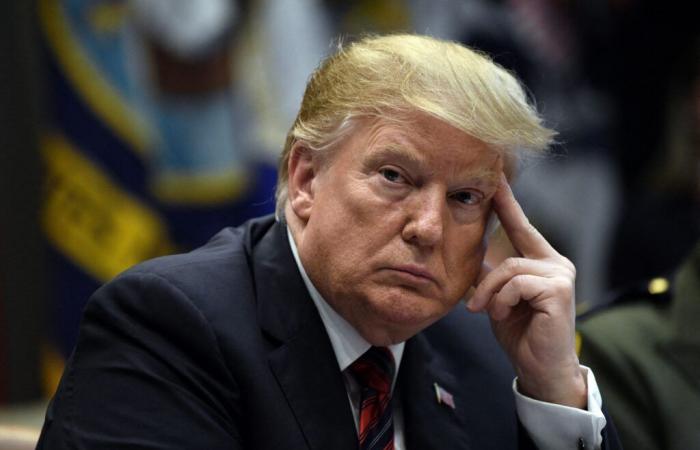The U.S. presidential race has captured worldwide attention, marking a pivotal moment for the United States and beyond. However, Americans have decided to stop voting based on their origin, race, or sexual orientation: the economy determined most of their vote, with Americans demanding even more economic opportunities and a cheaper daily life.
This election posed a fundamental question for Americans: would it usher in a new era of economic prosperity, or a period of economic interventionism underpinned by societal activism (wokism, ecology)?
The rest after this ad
Kamala Harris and Donald Trump presented very contrasting visions for the economic future of the United States, illustrating two very distinct trajectories. Kamala Harris had proposed an increase in the corporate tax to 28%, as well as a return to the highest tax rates for high-income taxpayers. She advocated a measured approach that, although costly, aimed to finance the environmental and social infrastructure needed to support inclusive growth.
The rest after this ad
Recovery through lower taxes
On the other hand, Donald Trump had called for a reduction in corporate tax between 15% and 20%, in line with the TCJA tax reform that he had initiated during his previous mandate, and the extension of the income tax cuts decided in 2017. His program, oriented towards recovery through lower taxes, sought to stimulate supply and strengthen American competitiveness through costs. It also relied on a policy of extensive deregulation, as well as increasing supply in key sectors such as energy, housing, and artificial intelligence.
Harris took a targeted approach to trade policy by imposing specific tariffs on Chinese technology to protect U.S. economic interests and national security while minimizing the risk of overbroad retaliation. Conversely, Trump had adopted a much more aggressive posture, proposing a 60% tax on all Chinese goods, which reflected a desire to reposition the United States in a head-on trade war, even if it meant creating tensions. additional on the international scene.
The rest after this ad
The rest after this ad
Inflation in the United States reached record highs in 2022-2023, approaching 10% at the height of the crisis. This outbreak has had a considerable impact on household purchasing power. The rise in prices has stabilized more recently (at the cost of a historic rise in interest rates), falling below 3%, but the general price level remains high, still affecting the daily lives of Americans. This situation allowed Donald Trump, during his recent campaign, to capture a certain popular resentment by proposing an ambitious program aimed at lowering costs in the areas of energy, fuel, and housing. It explains his probable final victory, much more than the subject of immigration.
Strong American growth
But despite this inflationary environment, the American economy has maintained an impressive pace of growth over the past eight years, with annual GDP increasing by more than 2% on average, even during the most difficult periods. This figure contrasts sharply with European results, in particular France, which has not managed to exceed 1% annual growth since Emmanuel Macron came to power, or Germany, which has even reached zero rate on last four years. Furthermore, certain American states such as Texas and Florida are surpassing the growth rates of major European economies, almost reminiscent of Asian economic “miracles”.
Another remarkable aspect of this economic prosperity is American monetary policy. The United States raised interest rates to more than 5% to combat inflation, but the increase did not stifle the economy. This resilience is partly explained by the securing of low rates by households and businesses during the Covid-19 crisis, and by an ability to withstand a rise in rates temporarily, given the flexibility of financial cycles. The room for maneuver available to the Federal Reserve, which has already announced rate cuts, constitutes insurance against a possible recession in the short term.
The United States is at the forefront of the digital revolution, with colossal investments in artificial intelligence (AI) and data center infrastructure. This technological craze goes well beyond the simple innovations of the past: it is accompanied by a true industrial renaissance, supported by federal policies such as the Chips Act. This law aims to restore the technological independence of the United States in semiconductors, a strategic sector facing Sino-American competition.
Elon Musk embodies this Promethean American dream
Elon Musk, through his recent political involvement, embodies this Promethean American dream, that of the Frontier, of technological and industrial renewal, which is also the continuation of the Renaissance and the European Enlightenment (abandoned by the Europeans but still symbolic in the United States). United since the Founding Fathers). Victorious Trumpism, with its deregulation programs, increased supply, its clear support in 2024 for technological innovators and cryptocurrencies, has renewed by giving it a new lease of life, this myth of the Border, like Reagan forty years ago. We will also note Trump's support for the conquest of space.
Finally, mass digitalization and AI-driven automation promise to improve productivity across various sectors, further strengthening U.S. competitiveness on the international stage. The United States is leading the adoption of these new technologies, such as with the Internet in the 1990s.
However, American economic prosperity comes at a cost: the public debt reaches almost 100% of GDP. Although this ratio is high, it remains under control for the moment, largely thanks to the “exorbitant privilege” of the dollar, the world's reserve currency. This situation allows the United States to finance its debt at preferential rates and attract excess global savings, whether from the Middle East, Asia, or Eastern Europe.
The dynamics of American debt are reminiscent of those of Japan, where the debt, although high, does not constitute an insurmountable obstacle to the country's economic development. If the administration manages to stabilize this ratio at around 100%, interest pressure on the federal budget could remain bearable, guaranteeing room for action for future administrations.
Trump promises to usher in an era of economic prosperity
Furthermore, if Trump's policies rather widened the deficit in 2017, just before Covid, thanks to strong growth, he was on the way to controlling the increase in public debt. This time, by criticizing the federal state even more, by promising to appoint Elon Musk at the head of a Commission to reduce public spending (the American version of “stripping the mammoth”), he could seek in between 1,000 and 2,000 billion savings.
Trump 2.0, whose economic policy was described by Arthur Laffer and Stephen Moore in the recent book The Trump Miracle (not translated into French), promises to usher in an era of unprecedented economic prosperity for America. The combination of bold monetary policies, strategic industrial reforms, and massive investments in future technologies will allow the United States to maintain its position as a global leader. Conversely, Europe is struggling to find levers for sustainable growth and is suffering from worrying stagnation.
Trump also offers an economic model to follow for European countries, and probably for patriotic and conservative right-wingers in Europe whose economic software today seems quaint and obsolete compared to the power of Trumpism.






